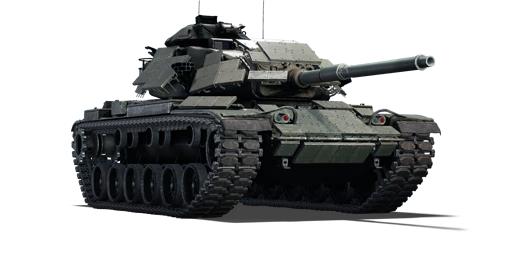Work began on improvements to the M60A1 in 1972, with the project designated as M60A1E3. The project saw the trial of many different new features, including features that would be implemented in the (RISE) variant. By May 1979, the vehicle was standardized as the M60A3, which saw the use of an AN/VVG-2 laser range-finder, an M21 solid-state ballistic computer, a thermal sleeve around the 105 mm gun, and switching out the coaxial with the M240 machine gun. This was quickly followed up with one more upgrade with an AN/VSG-2 Tank Thermal Sight (TTS) for the gunner. This new gunsight was approved for use and began being installed in August 1979, with the M60A3 receiving this new gunsight designated as the M60A3 TTS. One last upgrade was done in 1988 by adding appliqué armour in the form of explosive reactive armour to improve the overall protection of the tank. The US Army would use the M60A3 TTS until they were replaced by the M1 Abrams, though some M60A3 saw service with the US as late as the 1991 Gulf War by the US Marine Corps.
Introduced in Update 1.95 "Northern Wind", the M60A3 TTS is a great improvement from the preceding M60A1 RISE (P) with an assortment of upgrades to sensors and target acquisition. A thermal gun sight allows for the ability to highlight hot enemy targets in the environment and is coupled with a laser rangefinder to ensure better accuracy for long-distance hits. To bolster the tank's firepower, a new APFSDS is unlockable that can keep the M60A3 TTS competitive against newer opponents. Though the firepower metrics are much improved, the M60A3 TTS is unfortunately still an M60 platform, and the armour and mobility are still quite similar to preceding versions, so it will not be able to take the old and new kind of punishment that may be encountered with the newer tanks. That said, due to the firepower enhancements, the M60A3 TTS makes a great support tank to minimize its deficiencies and emphasize its advantages.















